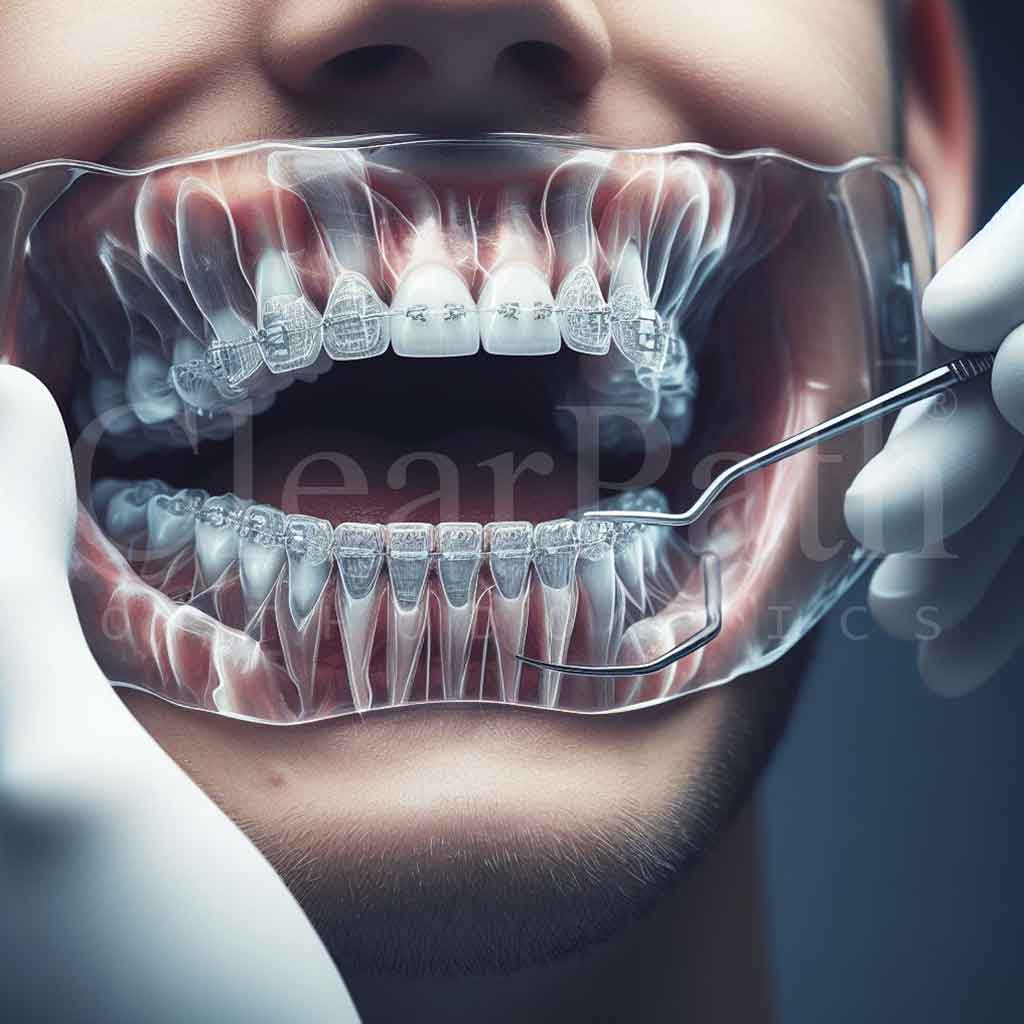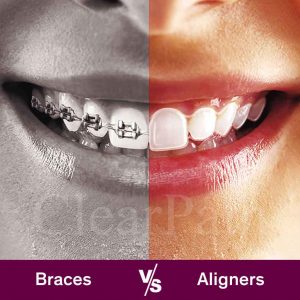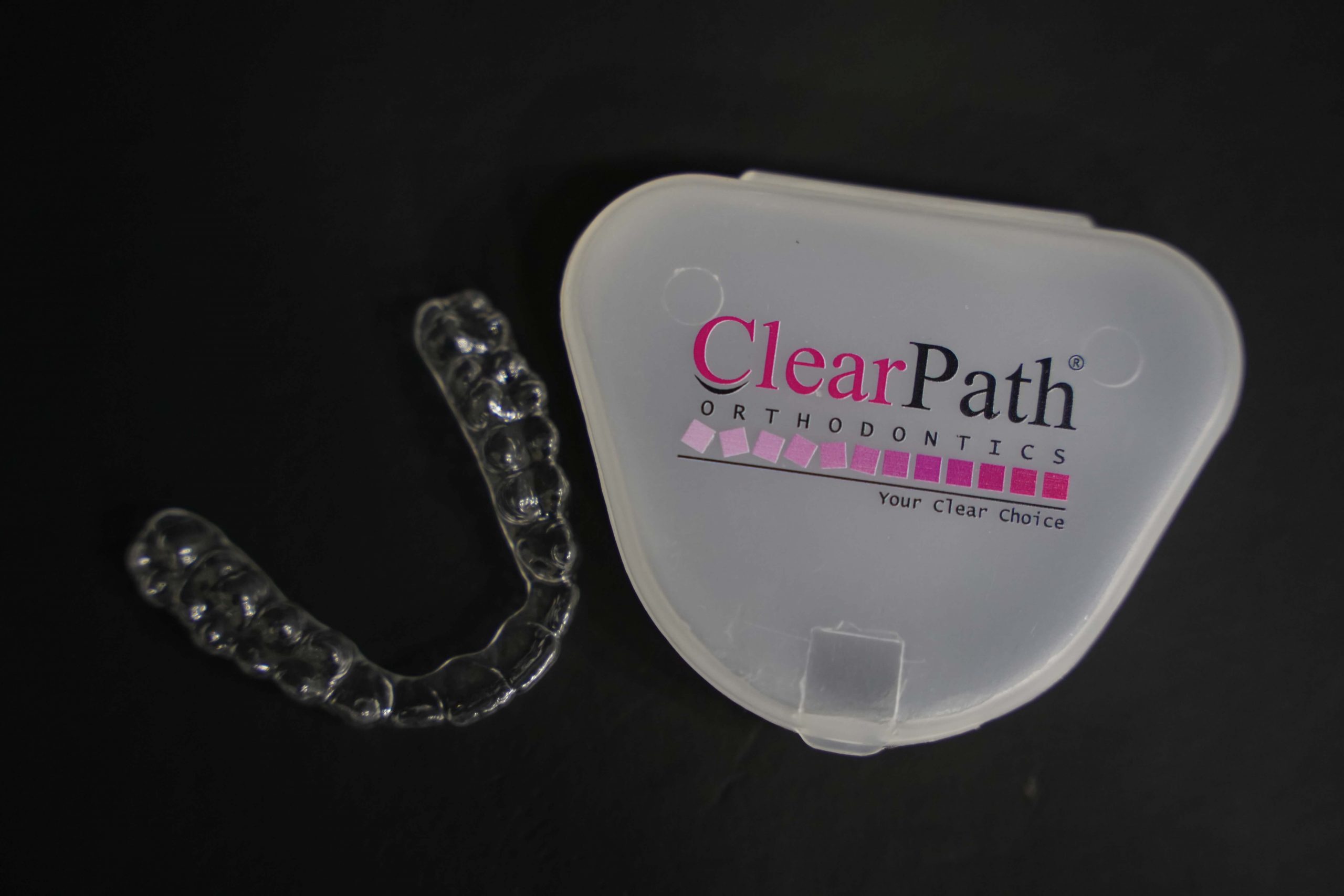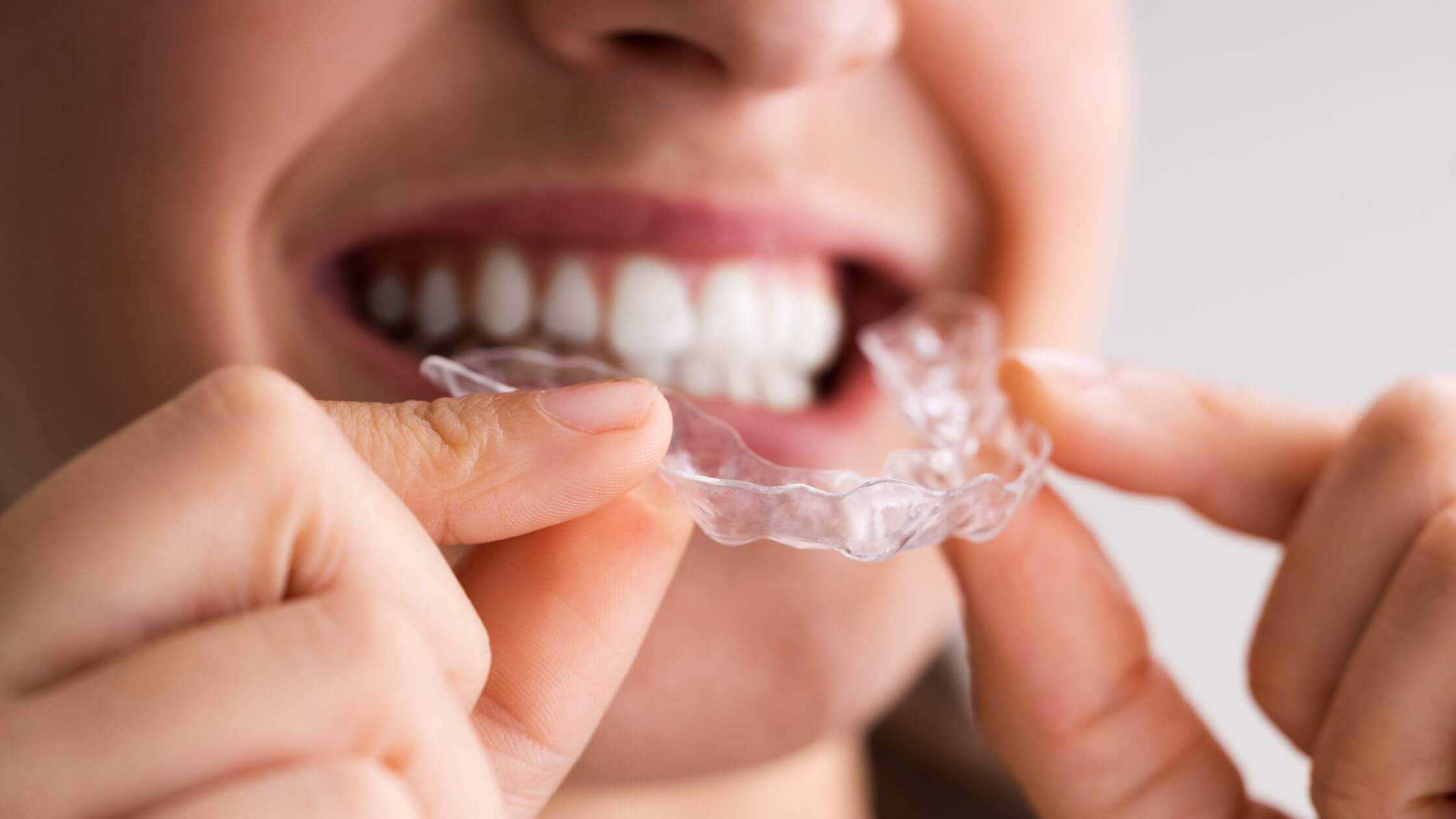Ever marveled at the eloquence of a winning smile? It’s a universal language that speaks volumes without uttering a word.
Unlocking the captivating potential of a winning smile becomes a challenge when your teeth decide to engage in a game of hide and seek 😫, a phenomenon known as ‘overlapping’ or ‘dental crowding’.
This common issue transcends mere aesthetics, extending its impact on your oral health and overall quality of life.
When delving into the intricacies of overlapping teeth, we quickly encounter the concept of ‘malocclusion’, where teeth rebel against their natural alignment.
Clear aligners, if you didn’t already know, are our heroes in this tale. Beyond offering a cosmetic teeth straightening fix, these sophisticated appliances also target impending plaque parties and gum troubles associated with crowding.
But before we get ahead of ourselves, let’s do a brief (yet immersive) walkthrough through the problem of orthodontic overlapping. Understanding the context of your ailment is important to realize successful treatment – with or without aligner therapy.
Table of Contents
ToggleSo, What Are Overlapping Teeth and Their Causes?
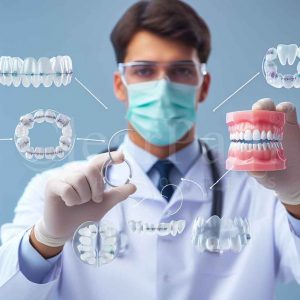
Ever had that moment when your teeth ditch the orderly lineup and decide to barge in with their neighbors, turning your mouth into a dental jigsaw puzzle?
That’s the gist of overlapping teeth – a situation where your teeth throw a misalignment party, refusing to stand in formation. It’s like a dental rebellion, leading to the double trouble of overcrowding and misalignment.
Now, the question arises – why do our teeth decide to go off the straight and narrow path?
Well, there are various suspects behind the scenes causing this mischief:
- Genetics: Some people inherit a small jaw or large teeth that do not have enough space to fit normally.
- Habits: Thumb sucking, pacifier use, or tongue thrusting can affect the development of the jaw and the alignment of the teeth.
- Missing or extra teeth: Having too many or too few teeth can disrupt the balance of the dental arch and cause shifting or overlapping of the remaining teeth.
- Dental work: Poorly fitted crowns, fillings, or braces can alter the shape or position of the teeth and cause them to overlap.
- Oral health problems: Gum disease, tumors, or infections can damage the supporting structures of the teeth and make them loose or misaligned.
- Injury: Trauma to the jaw or face can fracture or displace the teeth and cause them to overlap.
Types of Overlapping Teeth
There’s a trio in this narrative, each representing a different flavor of dental crowding:
Mild Crowding: Think of this as the subtle hiccup in the dental script. It’s marked by a slight overlap or misalignment that might play coy, only revealing itself upon closer inspection. While the cosmetic impact is minimal, addressing mild crowding is crucial to ward off potential oral health issues down the line.
Moderate Crowding: Here, the plot thickens. Moderate crowding takes the stage with a more pronounced overlap of teeth, stepping into the spotlight where the appearance of the smile is noticeably affected. It’s not just about looks; moderate crowding can throw a curveball into the arena of proper oral hygiene practices.
Severe Crowding: Cue the dramatic music. In the world of severe crowding, this misalignment form takes center stage, creating a challenging puzzle for both the patient and the orthodontist. Beyond cosmetic concerns, severe crowding can usher in functional challenges, from difficulties in chewing to navigating the nuances of speech.
Categorizing By The Degrees of Overlap
Now, let’s talk about the different degrees of overlapping teeth, each with its own storyline:
- Spacing: Imagine the teeth deciding they need a bit more personal space, resulting in noticeable gaps or spaces between them.
- Overjet: This is when the upper front teeth take the lead, sticking out a bit too far over their lower counterparts, causing a horizontal overlap.
- Overbite: The upper front teeth steal the limelight by covering too much of their lower counterparts, leading to a vertical overlap.
- Underbite: Picture the lower front teeth taking a bold step forward, positioning themselves in front of the upper front teeth, creating an overlap in the opposite direction.
- Crossbite: Some upper teeth decide to take the unconventional route, finding themselves inside the lower teeth, causing an overlap on one or both sides.
- Open Bite: In this scenario, the upper and lower front teeth choose not to tango when the mouth is closed, resulting in no overlap at all.
Treating each kind requires a personalized orthodontic approach – vis-a-vis clear aligners or braces – for a stellar resolution.
What Problems Can Overlapping Teeth Cause?

Let’s dive into some eye-opening statistics that shine a light on the broader impact of dental crowding:
A study featured in the Journal of Periodontology reveals a compelling connection between overlapping teeth and oral hygiene hurdles. It turns out that individuals with overlapping teeth are more susceptible to plaque buildup, paving the way for an elevated risk of gum disease.
Why? Well, those crowded teeth create nooks and crannies – the perfect breeding grounds for harmful bacteria.
According to insights from the American Academy of General Dentistry, misaligned or overlapping teeth heighten the odds of tooth decay.
Now, let’s unpack the complications overlapping teeth can bring to the table when it comes to your oral health and overall well-being.
Overlapping Teeth – Complications List
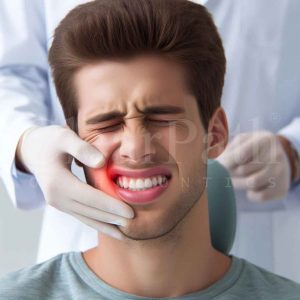
Difficulty in Cleaning:
Brushing and flossing become a bit of a challenge due to overlapping teeth. The result? Trapped plaque and food debris between the teeth, upping the ante on the risk of tooth decay, cavities, and gum disease.
Tooth Wear and Tear:
Overlapping teeth aren’t just a visual concern; they’re a source of stress for your jaw and teeth. This stress can lead to more wear and tear over time, causing enamel erosion, tooth sensitivity, and the potential for chipping or cracking.
Pain and Discomfort:
The misalignment of overlapping teeth isn’t just a visual hiccup; it can mess with your bite and chewing function, resulting in pain and discomfort in your jaw, teeth, or gums. Headaches, earaches, or neck pain might also make an appearance due to the misalignment of your jaw joints.
Speech Problems:
Ever thought that overlapping teeth could influence your speech? They can. Pronouncing certain sounds or words may become a bit of a tongue twister. And you might notice a lisp or a whistle making an unexpected cameo when you talk.
Low Self-Esteem:
The impact of overlapping teeth goes beyond the physical. It can take a toll on your self-esteem, making you feel self-conscious about your smile. This might lead you to dodge social situations. Also, you might pass up opportunities due to a smile that doesn’t quite align with your confidence.
How Can Clear Aligners Help with Overlapping Teeth?

With ClearPath clear aligners, embarking on the journey toward a straighter, healthier smile and fixing overlapping teeth has never been easier.
These transparent trays, custom-made to perfection, subtly shift your teeth into the desired position. Unlike traditional braces, they are discreet, removable, and remarkably comfortable. This spares you the discomfort associated with wires and brackets (the end-all of traditional braces 😬). Plus, when considered over the long haul, they’re cost-effective.
To book your tray, simply fill out the form below ✍ – and our friendly customer outreach reps will guide you through the works.
Further, our certified panel of orthodontists will evaluate your teeth, jaws, and facial structure to determine if you’re a good candidate for a smile transformation.
Our concluding remark, here and in all of our client interactions, is this:
Don’t ever settle for a dental puzzle; opt for a perfectly aligned and achievable – toothy – masterpiece instead! 🤓

